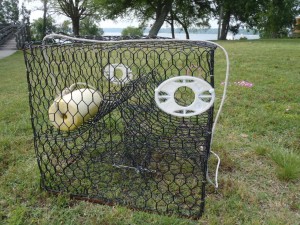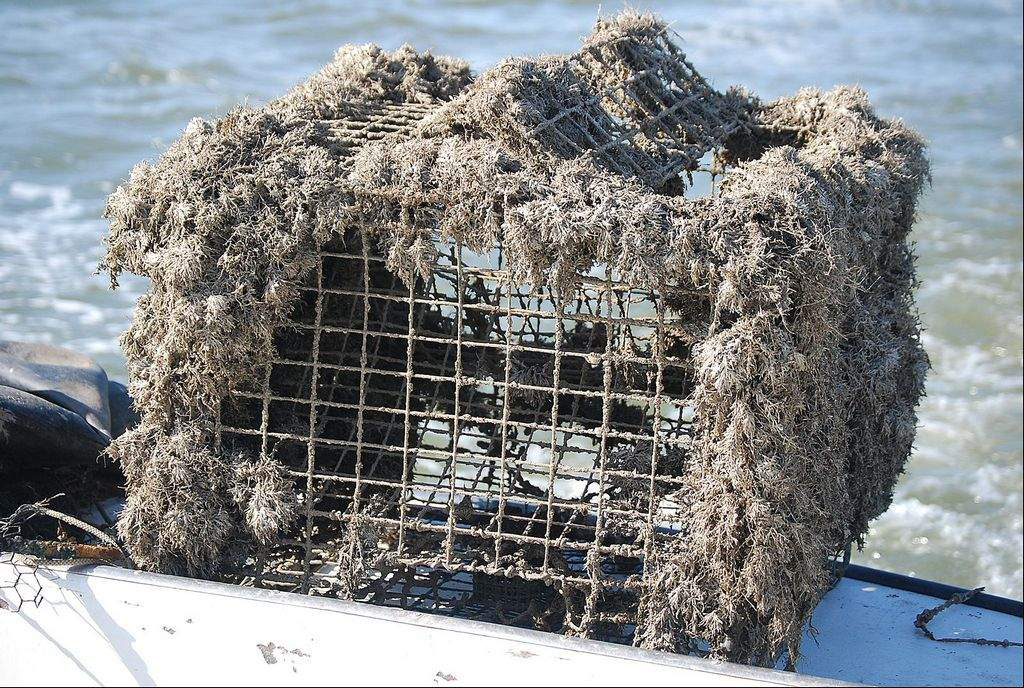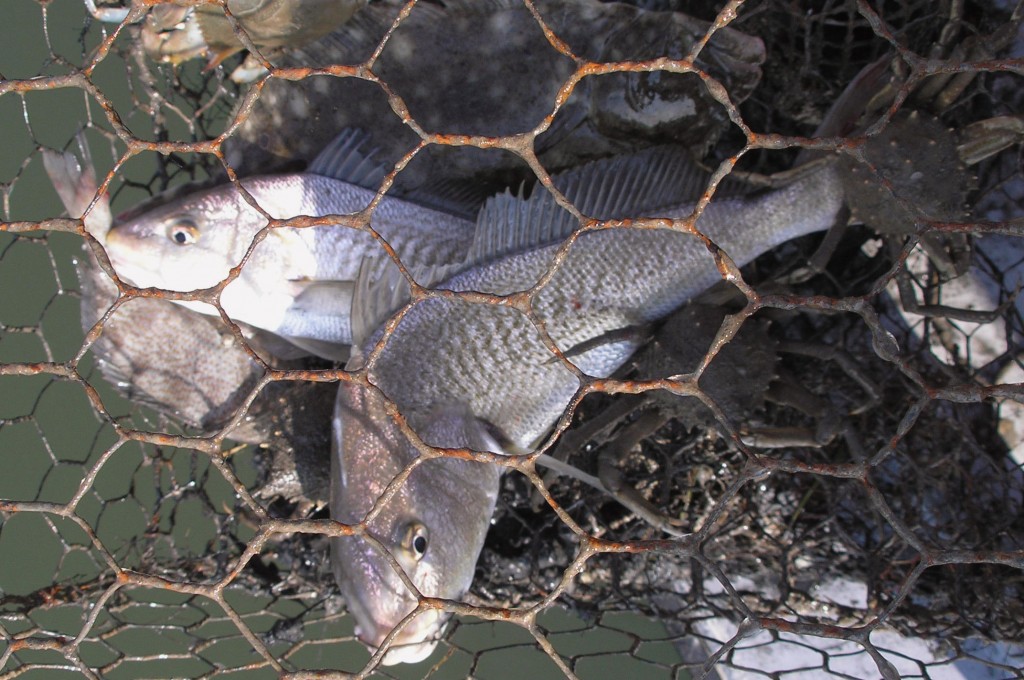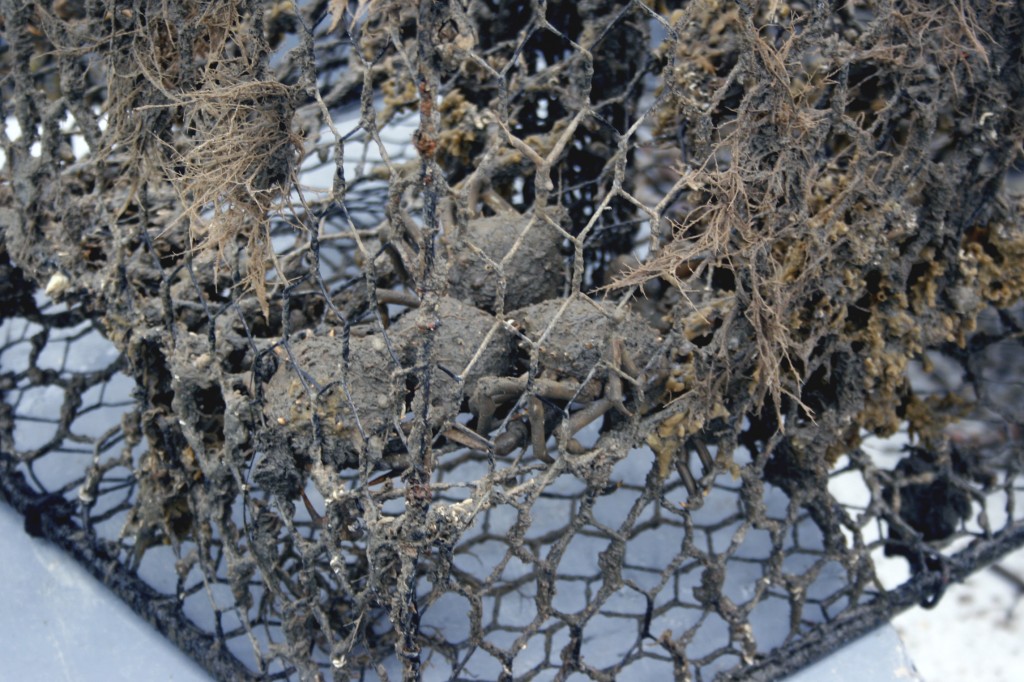by Kristen Minogue
Every year, thousands of crab pots disappear, their lines snapped by violent storms or severed by the propellers of passing boats. Cut off from the buoys that once marked their presence, they become “ghost pots,” lost at the bottom of the Chesapeake.
But ghost pots aren’t dead pots. They’re still quite capable of trapping crabs, including mature females undergoing their spawning migration. And with no one to retrieve them, crabs too large to escape are condemned to a slow death by starvation. This often has the eerie effect of luring even more animals to their demise, says Laura Patrick, aquatic ecologist at the Smithsonian Environmental Research Center (SERC).
“The crabs are just going in and they’re dying,” Patrick says. “And one of the problems is that the dead animals that are in there can be bait for new crabs to come in. So it’s kind of a self-baiting pot.”
Patrick, with fellow SERC biologists Rick Osman, Matt Ogburn and Tuck Hines, launched a project seeking ways to reduce pot loss, increase recovery of lost crab pots, or reduce the impacts on crab populations if pots aren’t recovered. They’re specifically trying to zero in on technologies that may work best in the Maryland portion of Chesapeake Bay.
Right now they’re in what Osman calls the “listening stage”—getting input from watermen about the challenges associated with pot loss and recovery. “I want to tap into their expertise of the Bay and their opinions of the problem,” Patrick says.
The latest estimates say it’s a big problem. NOAA estimated close to 85,000 derelict traps were sitting at the bottom of Maryland’s part of the Bay. A more recent Virginia study indicated ghost pots could be trapping at least 1.25 million blue crabs in Virginia alone, worth more than $400,000.
One technology, developed at the Virginia Institute of Marine Science (VIMS), already shows promise in the Virginia portion of the Bay: biodegradable cull panels that could disintegrate in the water if abandoned. Cull panels keep legal-sized crabs trapped inside until watermen return to retrieve their pots. But if they don’t return for months on end, bacteria eventually will eat away at the panel, creating a gaping hole so crabs can crawl in and out freely.
“It’s basically bacteria food, but it feels like plastic and it acts like plastic,” Patrick says.

Two white biodegradable cull panels (front and back) on a crab pot. (Virginia Institute of Marine Science)
Granted, panels that take months to degrade wouldn’t be much help to crabs already trapped inside. But biodegradable panels give Mother Nature a chance to disable the traps, so they only continue trapping animals for months and not years.
VIMS: How long it takes fished vs. non-fished pots to degrade >>
The price of attaching technologies that disable pots or aid in their recovery could represent an added expense to watermen. Then again, if crabbers are losing 10 to 30 percent of their pots a year, and replacing them can cost $20 to $30 per pot, it could be a sensible investment.
Ultimately it will boil down to weighing the cost of new technologies versus the potential benefits of increased harvests and fewer pots that need replacing. If the technology is too cumbersome, or the price tag too high, ghost pots could haunt the Bay for years to come. But because the benefits might outstrip the costs, Osman believes this is an issue where watermen and scientists have some common ground.




